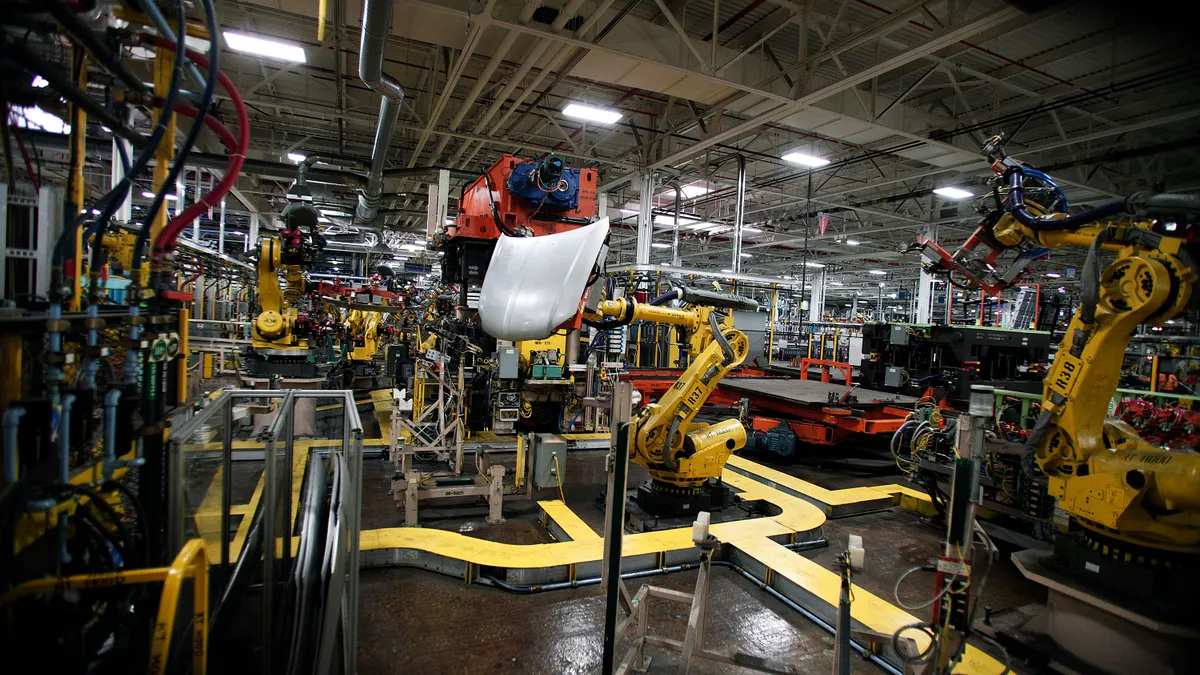Dive Brief:
- Stellantis entered into a pair of joint partnerships with Korean battery suppliers, adding necessary capacity for planned North American EV production, CEO Carlos Tavares said during a Q4 earnings call on Feb. 23.
- The battery partnerships are long-term investments in Stellantis' goal of 5 million battery-electric vehicle sales by 2030. Two separate memoranda of understanding with suppliers should yield "the appropriate level of battery supply" — at least 63 gigawatt hours — for the company’s North American market by 2025, Tavares said on the call.
- The parent company of Jeep, Dodge, Fiat, Chrysler and Maserati expects its deals with tech companies to boost its growing EV offerings, Tavares said on the call. Jeep’s first fully electric SUV will roll out in early 2023, and a Ram 1500 BEV pickup truck will arrive in 2024, the company announced Tuesday.
Dive Insight:
Soaring demand for batteries, chips and other parts for phones, vehicles and appliances has prompted suppliers and their customers to invest billions of dollars in capacity expansion projects.
The demand for EV components is heightened amid ongoing turmoil straining supply chains already stretched thin. Russia’s deadly invasion of Ukraine forced companies to halt operations in the region, while anti-vaccine trucker protests at the Canadian border are disrupting U.S. auto plants.
Geopolitical issues, in addition to semiconductor constraints and raw material cost inflation, present challenges to growth, Tavares said.
“2022 is not going to be from that perspective, the year where we can say we are back to normal,” Tavares said.
Amid widespread shipping disruption and electrical parts shortages, partnerships like Stellantis' aren’t limited to the auto industry.
Stanley Black & Decker co-invested in capacity projects with battery and semiconductor vendors as suppliers struggled to match production to soaring demand from EV makers and other companies.
The automaker is also changing its distribution model in Europe to improve customer service and reduce distribution costs "as we need to fund the electrification of our portfolio," Tavares said.
Adjusting Stellantis’ Europe distribution operations involved "highly constructive" conversations with members of the company’s dealer network and dealer associations, Tavares said. He did not elaborate on the conversations.
"We completely reengineered our distribution model," he said.













